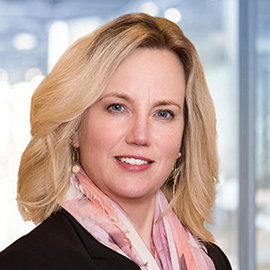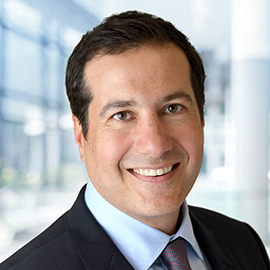Industry Spotlight: Aerospace & Defense Govcon Issue 2

Our second installment of the A&D/GovCon Industry Spotlight presents the latest employment trends at leading U.S. Aerospace and Defense companies and examines the implications of increasing Federal Civilian Agency spending on information technology. Finally, we share insights from top industry CEOs on what it takes to succeed in today’s markets in our 60 Minutes feature.
From 2016-2018, the top US Aerospace and Defense companies have shown an increase of 6.7% in headcount, which was well over 55,000 total employees according to the data provided by their annual reports.
Our analysis shows that the top six North American Aerospace & Defense companies all experienced meaningful employee growth across 2017 through 2018. These firms’ 11.0% workforce expansion is explained by two factors: hiring to meet demand as this group’s revenue increased at an aggregate compound annual growth rate of 13.5%; and healthy M&A activity among this group. Notably, Northrop Grumman’s acquisition of Orbital-ATK played a key role in creating the 12,000-strong workforce of its Innovation Systems division. Similarly, Boeing’s headcount jumped with the acquisitions of Aurora Flight Sciences (550 employees) and KLX (2,000 employees).
The acquisition story continues apace in 2019. Notably, the combination of L3 and Harris promises to crate a company that can deliver on the promise made by CEO Bill Brown of L3Harris’s [note: no space] to create a “C4ISR powerhouse.” However, the workforce implications of this combination are less certain as a series of divestitures are expected in the year ahead as the combined company’s portfolio is rationalized. Thus, we would not be surprised if the combined entity picks up where L3 and Harris left off and continue to look for workforce reduction opportunities over the next six to twelve months. Of course, the major merger story of the year is the yet-to-be-approved combination of United Technologies and Raytheon which would produce a new, enlarged firm called Raytheon Technologies. However, unlike L3Harris, we do not expect major job cuts here: Gregory Hayes, UTC’s chairman and CEO, has called the deal “integrational-light” due to the lack of overlap between the two companies outside of corporate headquarters. We believe this suggests that the workforce will continue to expand in line with both merging firms’ historical experience.
The pace of hiring over the past few years has created challenges for our clients and others in the industry. Enticing talent away from any of the large, growing companies is becoming increasingly difficult as many employees see an opportunity for upward mobility where they currently work. These companies are also creating incentives for their top talent to stay, sometimes in the form of increased base compensation, but sometimes in the form of stock options and other long term incentives.
With an overall increase of $4.1 billion in Federal Civilian Agency IT spending, the Department of Veterans Affairs looks to be the highest increase at 43%.
Similarly, 54% of government contracting companies anticipate a continued rise in internal IT spending with security and authentication along with modernizing legacy accounting systems as the two most common expenditures. (source: 10thAnnual Deltek Clarity Government Contracting Study, January 2019).
As IT spending across the government sector increases, the need for greater transparency and efficiency has never been more paramount, thus giving rise to OMB’s Technology Business Management (TBM) framework. When implemented, TBM enables federal executives to make data-driven decisions, analyzing trade-offs between cost, quality, and value of IT investments. TBM is considered so important that it was included in the President’s Management Agenda, requiring all federal agencies to convert to the TBM model by FY 2022.
As TBM takes hold across federal agencies, our analytics indicate that highly talented program and project managers will become increasingly sought after. Candidates who are particularly adept at managing contract efficiencies, costs, and data will be even more essential to a program’s success than before. Companies that are able to attract and retain the best talent with those skills will see a significant advantage in the coming years.
With the unemployment rate remaining historically low and demand top talent increases, it is more important than ever for companies to address total workforce planning. This includes the development of outstanding candidate relationship management solutions to improve recruiting.
The A&D/GovCon Team
Our team offers decades of experience and expertise to its clients. From C-level placements at many of the industry’s largest organizations to complex high-value technical leadership roles, mission-critical start-up leadership positions, and mid-level manager positions, the team has placed hundreds of successful candidates helping to transform client organizations and propel candidate individual careers forward. To learn more, please contact one of us by clicking on our photos here.





